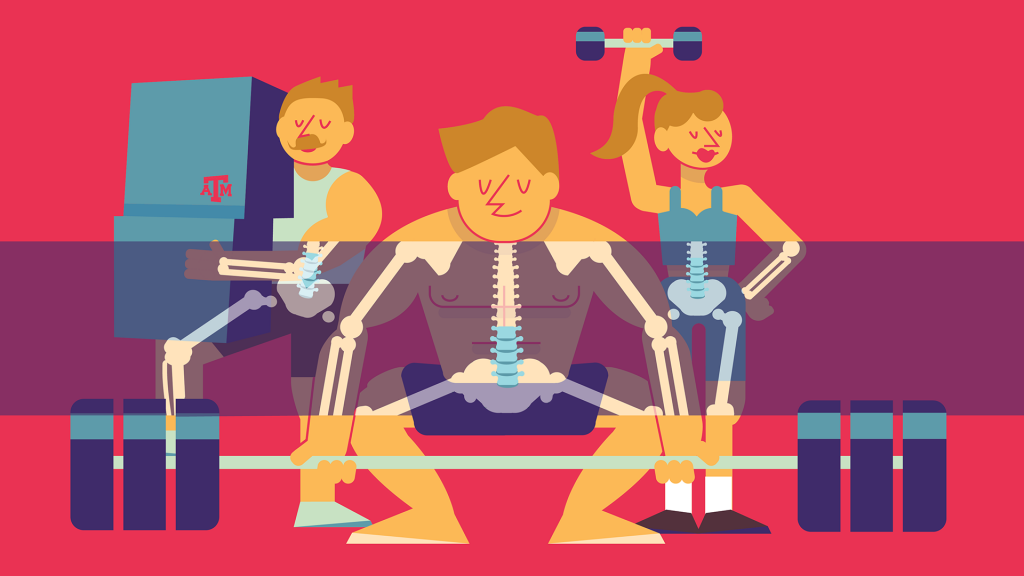Dynamic X-ray technology advances study of human spine and lower back

Image: Melissa Butcher, Research Communications
As part of an ongoing effort to investigate spine-related disorders, a team of researchers at Texas A&M University became the first to successfully use dynamic X-ray technology to map the lumbar spine. The revolutionary, computerized visuals produced in the study will set the stage for future research on the prevention and treatment of lower back pain and other spinal injuries.
Funded by the National Institute for Occupational Safety and Health, the project is led by Xudong Zhang, professor and Liollio FamilyFaculty Fellow in the Department of Industrial and Systems Engineering.
His team includes Suman K. Chowdhury, assistant research scientist; graduate student Yu Zhou; and collaborators at the University of Pittsburgh and Washington State University.
Their work has been published in Human Factors and the Journal of Biomechanics.
Unlike the static images that help doctors diagnose broken bones, Zhang said, dynamic X-ray technology uses multiple X-ray sources and high-speed cameras set up at different angles to capture a series of images that track bones in motion. The sequences can then be converted into highly accurate,individualized 3D models.
With a detailed view of the motions of lumbar intervertebral joints and often-overlooked stabilizer joints known as facets, the team was able to examine direct, real-world effects of what a person is doing and what the lower back is experiencing.
Through their findings, the team is redeveloping fundamental knowledge of the spine and guidelines for worker safety that address what motions are considered high- and low-risk lift maneuvers and what should be avoided to help prevent spinal damage.
By mapping and modeling full digital replicas of human beings, Zhang’s research extends into the future to perform what-if simulations to advance the basic understanding of the biomechanics of the spine and how that knowledge can be applied.
“We can only ask our human subjects to perform safe tasks. We can’t ask them to push limits,” Zhang said. “But once we build the subject-specific computer models, we can virtually push their limits and create simulated injurious scenarios.”

